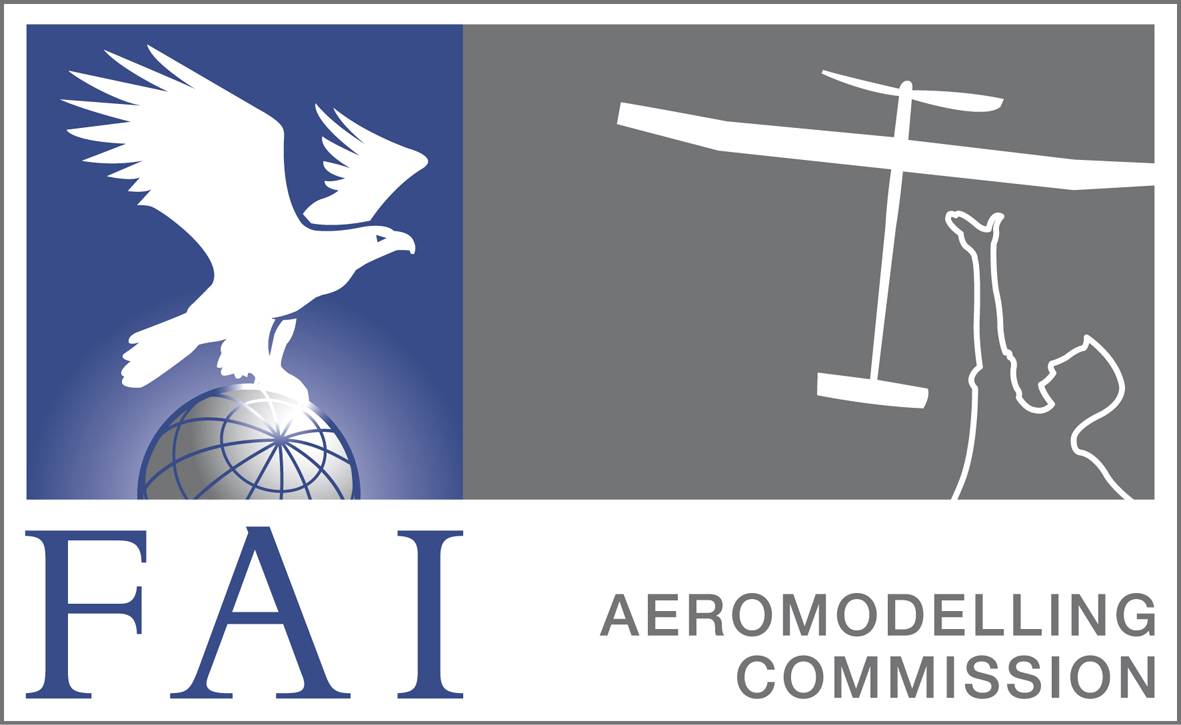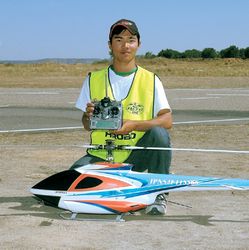
FAI Aeromodelling Commission (CIAM)
F3 - Radio Control Helicopters


The CIAM F3 Helicopter class consists of two subclasses: F3C and F3N.
F3C – RC Aerobatic Helicopters
In F3C pilots have to perform complex hovering and aerobatic manoeuvres with a radio controlled model helicopter. Each manoeuvre must be executed with high precision and skill in any attitude and under all weather conditions. F3C model helicopters have a weight limit of 6.5 kg, a maximum rotor disc area of 250dm2 and are powered by internal combustion engines without any displacement restrictions or electric motors with a maximum battery voltage of 51 Volts. The on-board radio control equipment, receiving signals from the competitor’s transmitter, actuates the engine throttle, main rotor lateral and longitudinal cyclic pitch, main rotor collective pitch and tail rotor pitch to guide the model helicopter through hovering and aerobatic manoeuvres.
An international F3C competition consists of four preliminary rounds, two semifinal rounds for the best 28 competitors and two final rounds for the top 14 pilots. Manoeuvre schedule P is used for the preliminary rounds and the more difficult schedule F is used for the semifinals and finals. Each schedule contains two hovering manoeuvres that are performed directly in front of the judges over a designated helipad layout. Aerobatic manoeuvres are performed in a window that extends 60 degrees to the left and right of a centre line, and at an elevation angle of no more than 60 degrees. A prescribed aerobatic manoeuvre must be performed each time the model helicopter crosses the centre line.
The hovering manoeuvres are flown at a distance of 15 metres from the judges. The aerobatic manoeuvres are typically flown at 80 to 100 metres in front of and parallel to the judges’ line.
Each competitor’s performance is assessed by a panel of maximum five judges who award marks between zero and ten (0.5 increments) for each manoeuvre. Judging is based on four basic criteria: Precision , Smoothness/Gracefulness, Positioning and Display/Size of manoeuvres. Points are subtracted for various types of defects observed by the judges, the severity of these defects, and the number of times the defects are observed.
The F3C class is also a including team classification. FAI member countries may enter a team consisting of one team manager, a maximum of five competitors provided that at least one is a junior (age limit 18 years in the year of the event) and at least one is a woman and official helpers. The team classification for World and Continental Championships is established at the end of the competition by adding the numerical final placing of the best three team members of each nation.

F3N – RC Freestyle Aerobatic Helicopters
The F3N class represents a more modern style of helicopter flying. Most of the manoeuvres are more difficult to fly in contrast to F3C. The flying schedules are not specified. Each pilot can put together his own schedule based on his personal skills and preferences.
F3N model helicopters have a weight limit of 6.5 kg and are powered by internal combustion engines without any displacement restrictions or electric motors with a maximum battery voltage of 51 Volts. The model is controlled in the same way as in F3C.
An international F3N competition consists of four preliminary rounds and three final rounds for the top 10 pilots. There are three different schedules to fly. The first one are the set manoeuvres. Here the pilot has to choose seven manoeuvres out of a catalogue with 40 manoeuvres which will be presented in front of the judges. Every manoeuvre has an own k-factor that is multiplied by the judge’s score. The second schedule is freestyle. Each competitor is given a flight timeframe of at least three, and no more than four minutes. During this time there are no restrictions for the flight or the performed manoeuvres except those regarding safety. The last schedule is music freestyle. It is the same as freestyle but flown to music. During the preliminary rounds the set manoeuvres are flown twice. The judges’s criteria for the set manoeuvres are equal to F3C. The criteria for freestyle and music freestyle are difficulty, harmony, creativity precision and safety.
Each competitor’s performance is assessed by a panel of maximum five judges who award scores between zero and twenty for each figure during the set manoeuvres or each criteria at freestyle and music freestyle. Points are subtracted for various types of defects observed by the judges, the severity of these defects, and the number of times the defects are observed or during the freestyle rounds for insufficient implementation of the given criteria.
The F3N class is also including a team classification. The composition of a team and the team classification is identical to F3C.
CIAM F3 Helicopter S/C web site.
You may find additional information for RC Helicopters on the following link http://www.f3cn.org. It is the site maintained by the CIAM RC Helicopters S/C.
